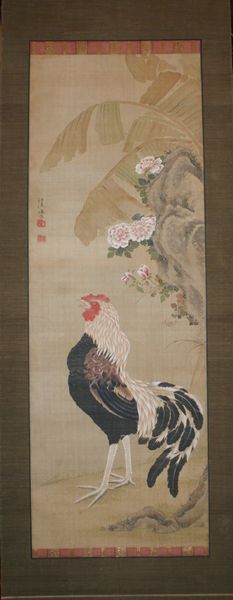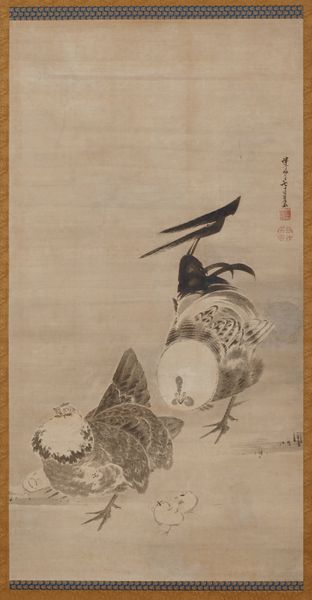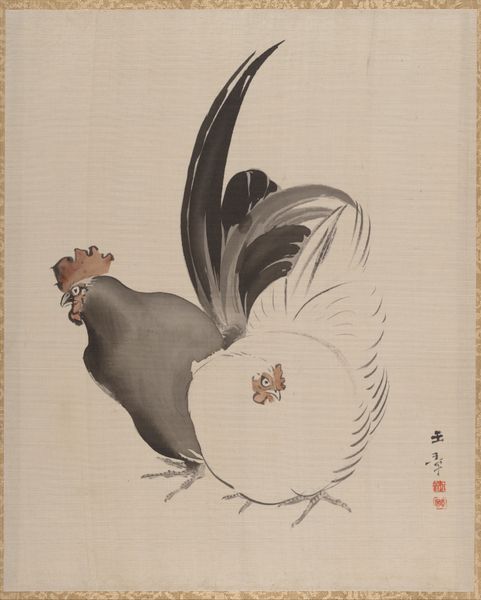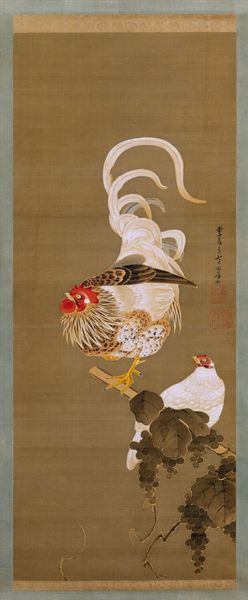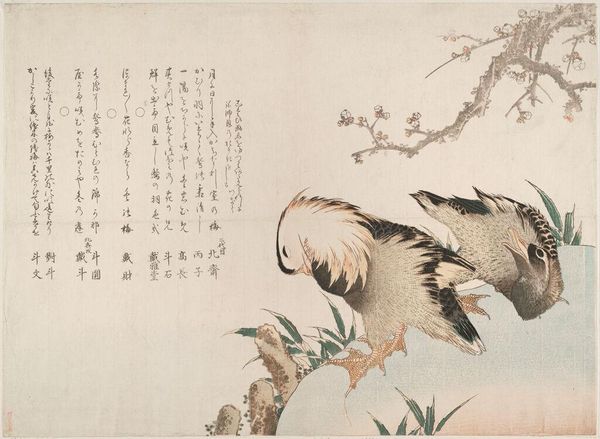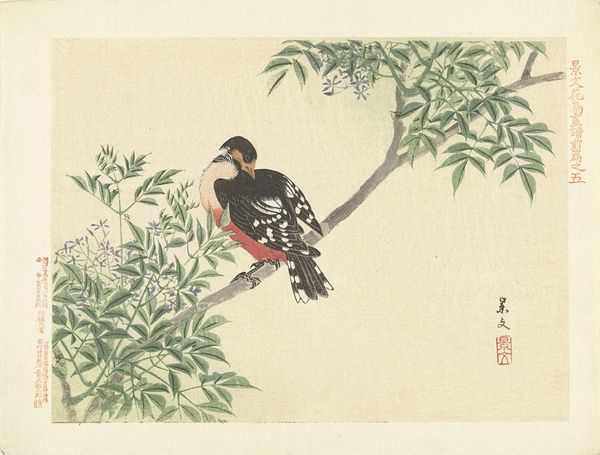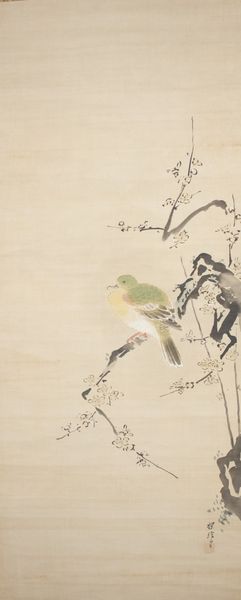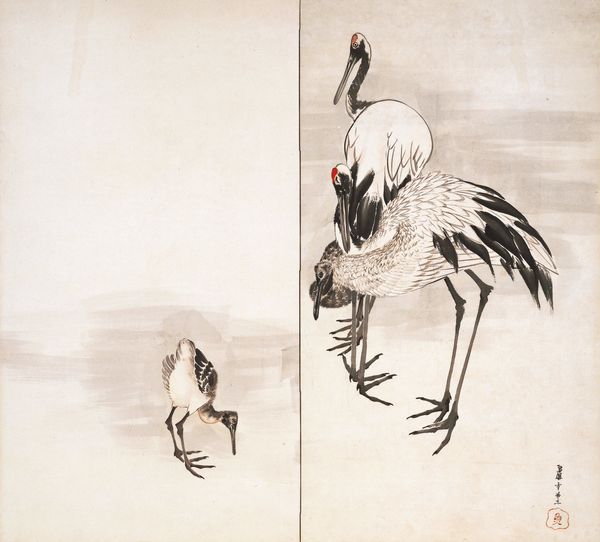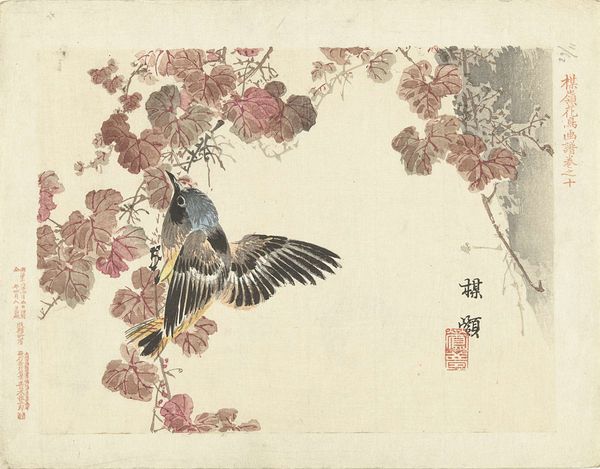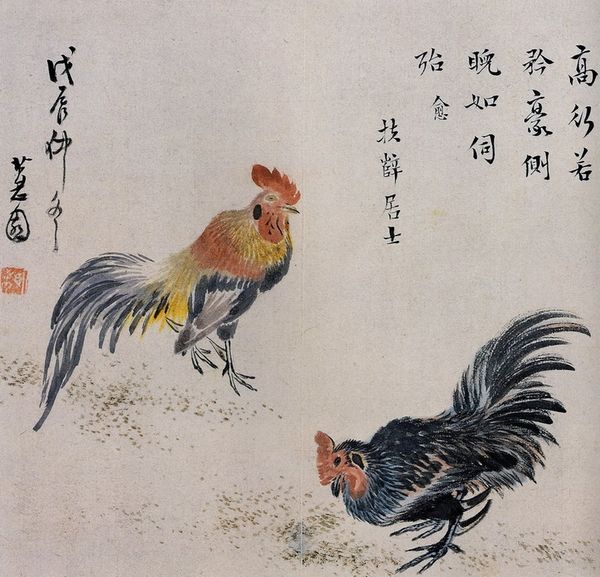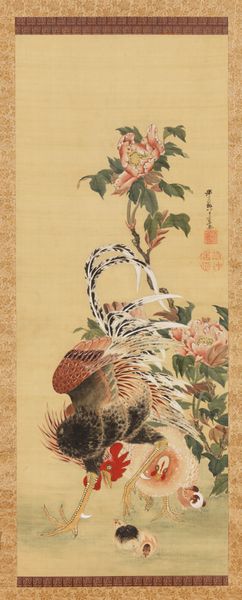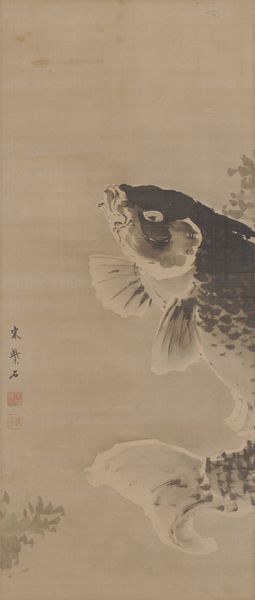
Dimensions: 42 13/16 × 14 7/8 in. (108.74 × 37.78 cm) (image)79 7/16 × 20 1/4 in. (201.77 × 51.44 cm) (mount, without roller)
Copyright: Public Domain
Sō Shiseki painted this ‘Rooster’ with ink and color on silk. Notice the exquisite balance of the composition. The vertical format is divided into thirds, with the rooster at the bottom, the tree dominating the middle, and an open space at the top, creating a sense of depth. Shiseki’s brushstrokes capture the texture and form of the rooster's feathers, the rough bark of the tree, and delicate leaves. The semiotic meaning is clear: the rooster, a symbol of vigilance and courage, stands proudly, and the tree, a metaphor for resilience, reaches upwards. The light washes of color and the subtle gradations of ink create a harmonious, almost ethereal quality. The composition is not merely descriptive; it also reflects the philosophical underpinnings of literati painting. The interplay between fullness and emptiness invites contemplation, reflecting a worldview that values harmony and balance. Shiseki masterfully employs the formal elements of line, color, and space to create a work that is both visually appealing and deeply symbolic.
Comments
minneapolisinstituteofart almost 2 years ago
⋮
The format and conventions of book design meant that illustrations did not translate directly to paintings, and Edo-period readers were likely aware of the differences. Images in books were not expected to be copied one-to-one; rather, they were adapted to the appropriate format. In this painting, Shiseki works from the established genre of paintings of bird and flowers or plants. In both the illustration and the book, the rooster is paired with the Chinese parasol tree (in Chinese, wutong). The use of color allowsShiseki to demonstrate his understanding of Western-style shading as well as Chinese symbolism.
Join the conversation
Join millions of artists and users on Artera today and experience the ultimate creative platform.
